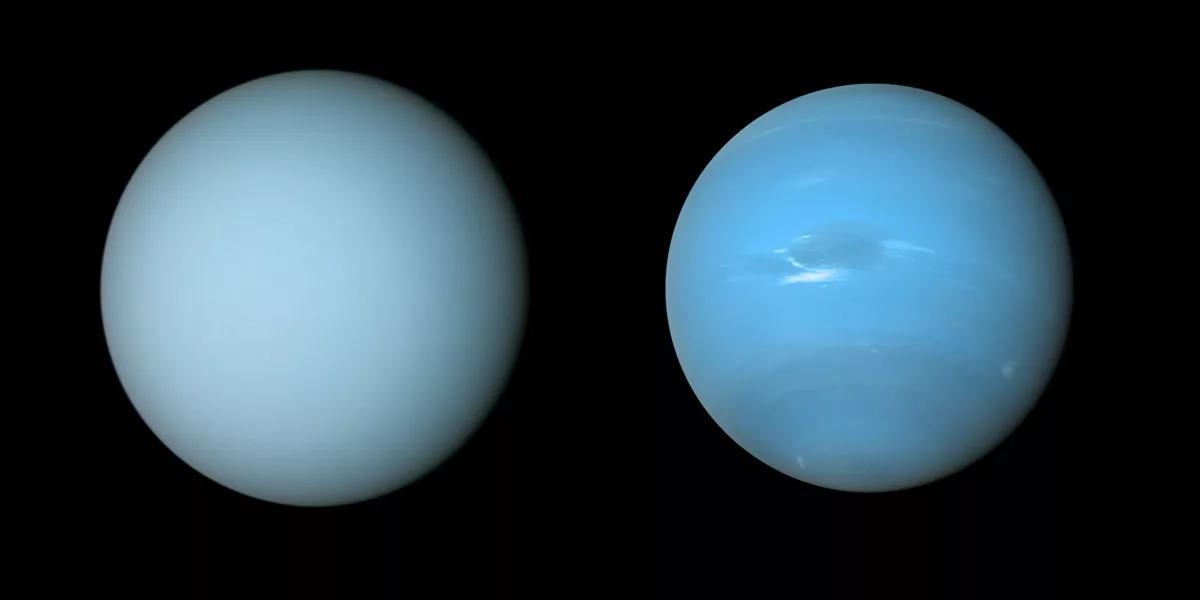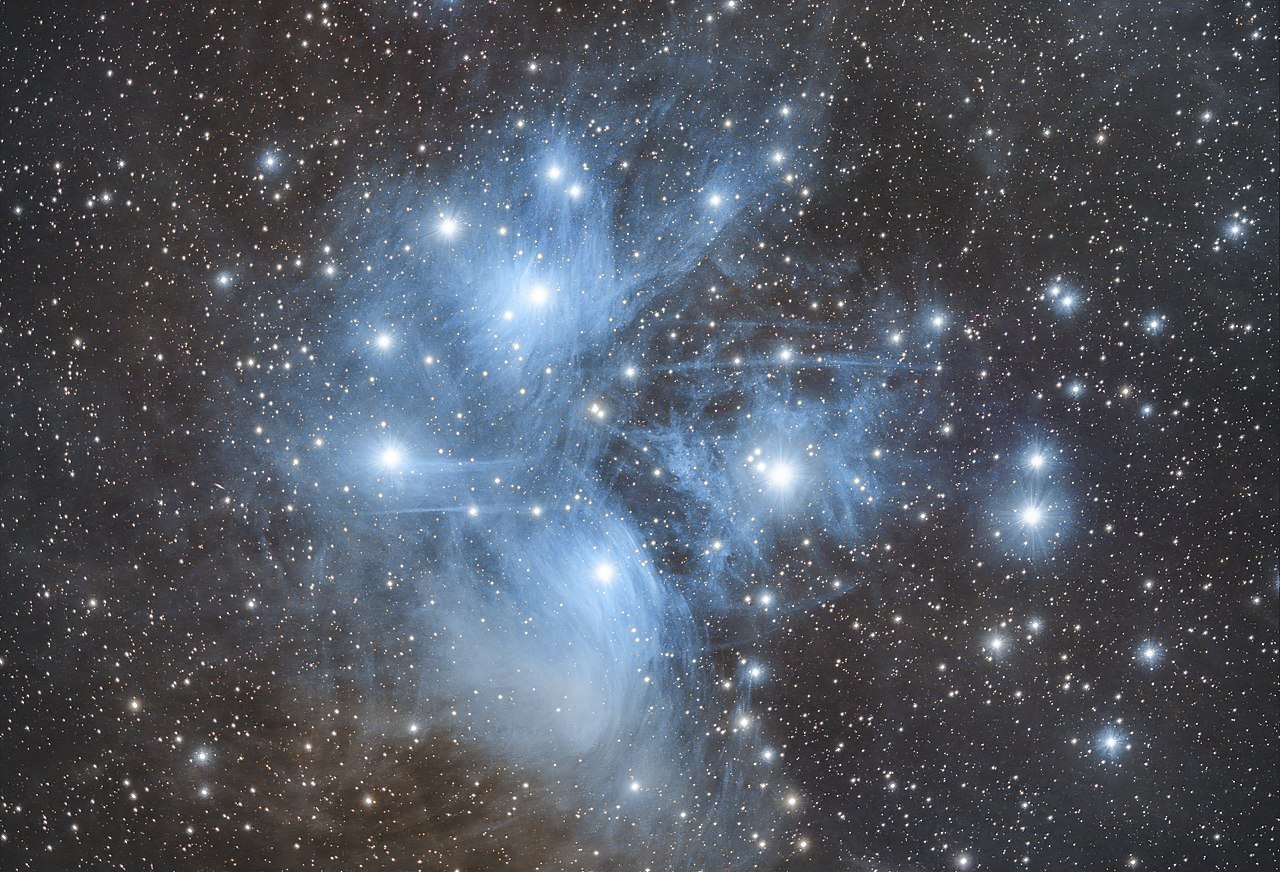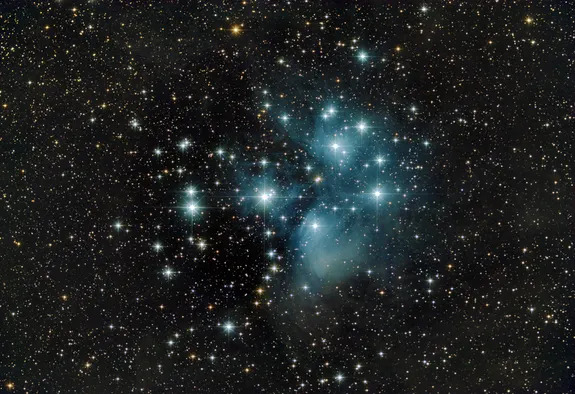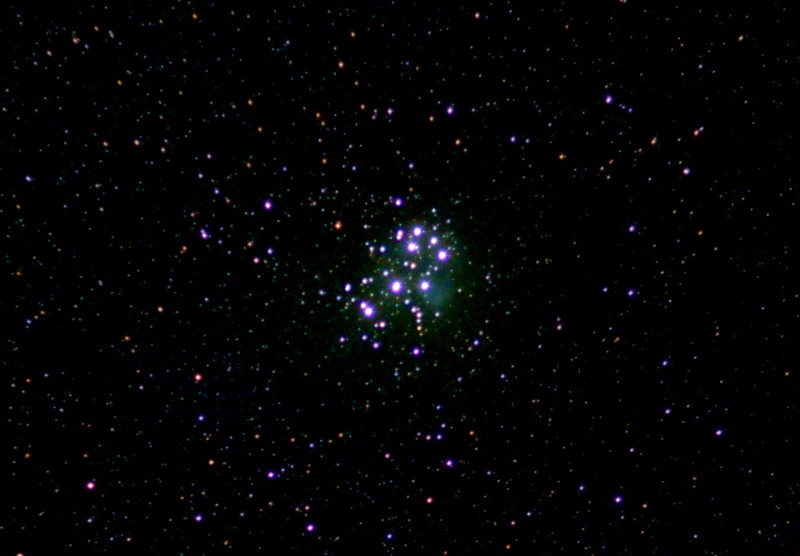Ann wrote: ↑Fri Nov 11, 2022 6:12 am
Capturing Uranus at the limb of the eclipsed Moon is a very fine achievement! Congratulations!
But of course... I am not the Color Commentator for nothing. So what about the color of Uranus? This is what it looks like in the APOD:
APOD 11 November 2022 detail.png
What does Uranus look like in other pictures? Here is a sample:
<<< images >>>
The color of Uranus is quite subtle. I think, nevertheless, that it is more cyan and less green than what we see in the APOD.
Ann
That is really an amazing capture.
Thinking about Ann's comments, I wondered why Uranus might appear more green in today's APOD than in the JPL images.
Briefly, it occurred to me that Uranus might be experiencing the same light filtering that the Moon was experiencing, as it passed into Earth's shadow. Of course this is totally incorrect! I had to think for a moment.
Uranus looks like a small item right by the Moon, so it seemed like it ought to be getting eclipsed as well. But that's just one of the funny things about light and geometry and the vast distances in space. From Uranus, they would have seen only a transit of Earth (and our moon) across the Sun. And the dark image of the Earth/Moon across the Sun from the vantage of Uranus would be just a very tiny speck on the Sun's face, so it would have no noticeable effect on the illumination that Uranus received at *any* time in question here. Also, a bit confusing, the light travel time to Uranus is about 2.5 hours, so the image we see of Uranus here is actually the light the planet reflected at a noticeably different time than the time of this alignment, anyway!
So, I still wonder why Uranus appeared more green in this apparently true-color image than JPL had rendered it in its attempt to render the true color of the planet to human eyes. We are, in today's APOD, still seeing its light after it passes through Earth's atmosphere, so I assume that is affecting the color. Blue light scatters well in our atmosphere, so everything we see from space in ground-based telescopes must appear "less blue" than it "really" is. Is that something that people adjust for when characterizing the colors of stars, or is it just taken as a given? Then space-based scopes like Hubble or Gaia do not have this problem.
 Blood Moon, Ice Giant
Blood Moon, Ice Giant







